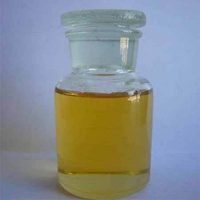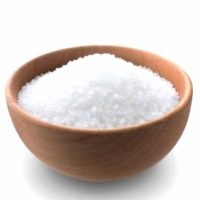Tolyltriazole (TTA)
- CAS Number: 29385-43-1
- Appearance:Solid
- Purity:%
- Made in: China
- Phone Num : +86-2150591759
- E-mail: info@shanghaimetex.com
- Description
- analysis
- shipping & delivery
Description
Tolyltriazole (TTA), which is a derivative of benzotriazole (BTA) and is also known as 4 (5) methyl benzotriazole, is one of the chemicals used in industry for which various applications have been defined. TTA is a very effective corrosion inhibitor for copper and its alloys. This material is suitable for systems where metals are in constant contact with liquids, as a result of which the possibility of rust is high and they need to take care of and prevent rust.

Physical and Chemical Properties:
TTA has a molecular formula of C7H7N3 and a molar mass of 133.16 (g / mol). It is a light white or yellow powder or in form of granule and is a combination of 4 methyl benzotriazole and 5 methyl benzotriazole, it can be dissolved in organic solvents such as benzene, alcohol, toluene, and chloroform, but is difficult to dissolve in water.
| Chemical formula | C7H7N3 |
| Molecular Weight(g/mol) | 131.151 |
| Appearance | solid |
| Density (g/cm3) | 1.24 |
| Melting point (° C) | 83 |
| Boiling Point (° C) | 317 |
| Water Solubility (g/100 mL at 18° C) | <0.01 |
| Solubility | In methanol, isopropyl alcohol, ethylene glycol, and toluene is soluble |
| color | white or yellow |
| form | powder or granule |
| Flashpoint (° C) | 210-212 |
| Chemical Structure Depiction |  |
Differences between TTA and BTA:
The inhibitory properties of TTA are greater than those of benzotriazole due to the presence of the methyl group in TTA, which is a non-polar group and increases the hydrophobic properties of metal surfaces such as copper.
Production Process of TTA:
- TTA is produced by adding a methyl substituent to BTA. The production of this substance is not compatible with oxidizing agents and neutralizes acids in exothermic reactions, which neutralizes the formation of salt with water.
- To produce TTA, sodium nitrite interacts with acetic acid and ortho phenylenediamine at 5 to 10 ° C in an ultrasonic bath.
Applications and Uses of Tolyltriazole:
- This substance is one of the most important corrosion inhibitors. In industry, this material is used as one of the most important corrosion inhibiting chemicals to protect -metals such as copper, silver, nickel, zinc, and aluminum.
- This chemical is used as a corrosion inhibitor of metals. This substance is also used as an anti-corrosion agent in the production of antifreeze by 0.1 to 0.2%. Antifreeze-containing TTA is often used in aircraft.
- It is also used in the production of chemical products used as pesticides and insecticides. This material has anticoagulant and antifreeze properties.
- Application in cosmetics and personal care products.
- This substance is an inhibitor of the nitrification of urea fertilizer in agricultural soils.
- Plastic production.
- Water treatment industries (prevention of corrosion of water pipes).
- Production of ink and paint.
- Lubricants and greases.
Prevent corrosion of metals:
This compound is one of the most important anti-corrosion inhibitors. By forming a thin film on metals and copper alloys, it can protect these metals from corrosion and discoloration. Transparency and gloss, increased service life and no corrosion of the surface can be the benefits of using this corrosion inhibitor.
In general, this product is a strong electrochemical layer that acts as a protector against corrosive ion attacks, the protective surface does not disappear easily and shows a high degree of thermal and oxidative stability.

Safety information:
This compound can cause respiratory problems and inhalation can damage the respiratory system and lungs. Exposure to this substance can cause eye and skin irritation.
It is also dangerous for aquatic life.


First-aid measures:
- Skin Contact: Immediately flush skin with water.
- Inhalation: move the person to the fresh air.
- Eye Contact: Rinse eyes with water for at least 15-20 minutes.
- Ingestion: Do not induce vomiting. Get medical aid immediately. Call a poison control center.
Packing and storage:
Keep the container tightly closed in a dry and well-ventilated place.
analysis












